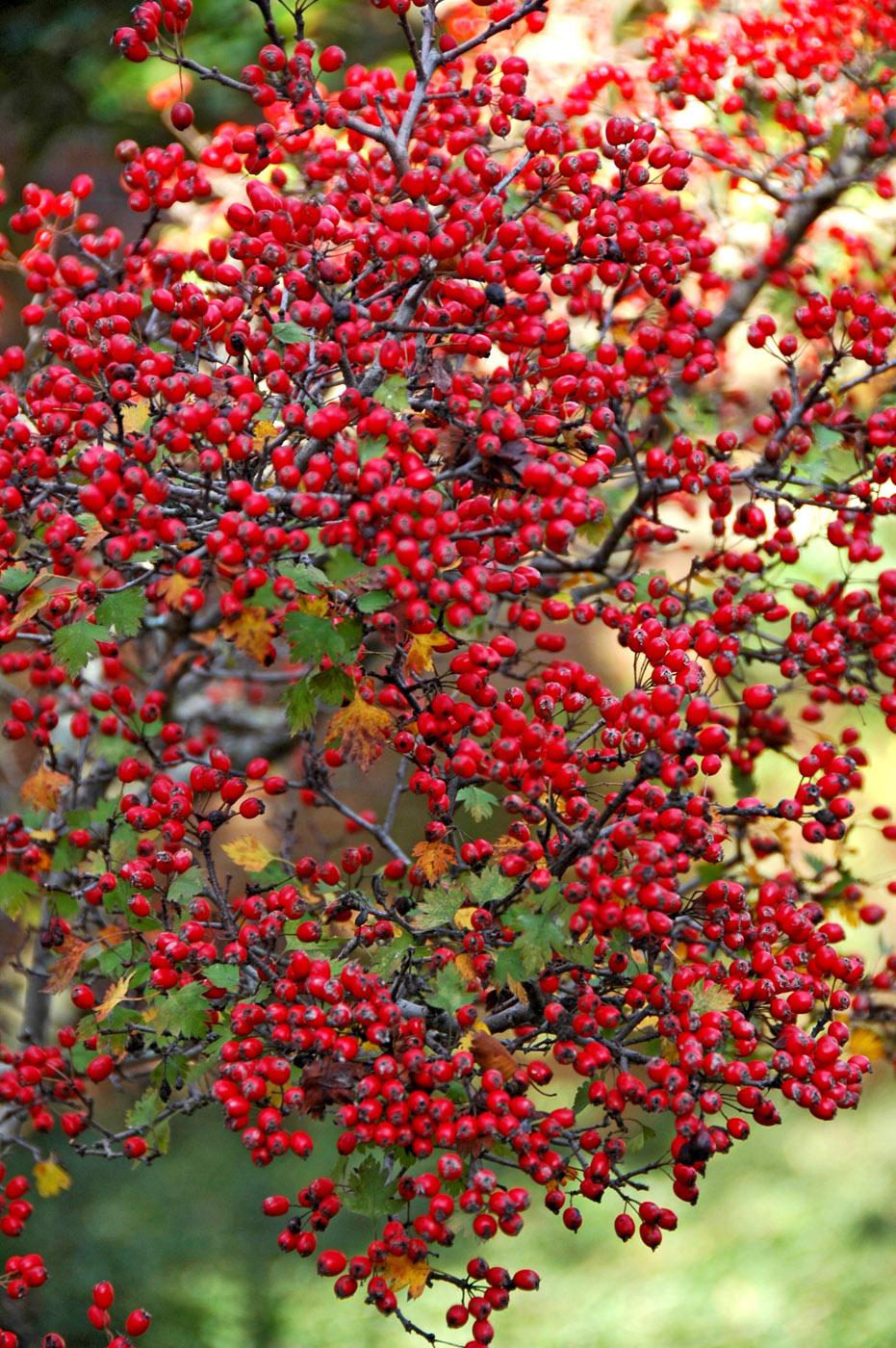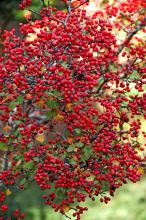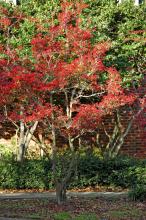Information Possibly Outdated
The information presented on this page was originally released on December 19, 2007. It may not be outdated, but please search our site for more current information. If you plan to quote or reference this information in a publication, please check with the Extension specialist or author before proceeding.
Enjoy a native berry producer each winter
By Norman Winter
MSU Horticulturist
Central Mississippi Research & Extension Center
Sometimes we take for granted native plants and forget about the outstanding attributes they bring to the landscape. One example is the parsley-leaved hawthorn.
My office is located at Hinds Community College, and the campus here is a virtual arboretum. Every tree and shrub looks as though it was part of a plan, and winter color from berry-producing plants was definitely in the design.
For more than 12 years now, I have been admiring the parsley-leaved hawthorns on campus. Botanically speaking, they are Crataegus marshallii, at least according to most references and U.S. Department of Agriculture Web sites. Just to keep us on our toes, it probably has been changed to Crataegus apifolia.
The name tells you the leaves look like parsley -- not the curly type, but the regular version. In the spring, this member of the rose family loads up with a blanket of snowy white blossoms with long, delicate-looking stamens topped by pink anthers.
Let me simply say they are doggone pretty, and that's just at springtime. I challenge you to find a small tree with more red fruit during the fall and winter than the parsley-leaved hawthorn. They are borne by the thousands and make the tree visible from a great distance as the sun shows off their brilliant color.
Birds eat the fruit, but I also have noticed each tree has upper twiggy growth that is perfect for birds wanting to nest. It's sort of like one-stop shopping for the birds -- home and a grocery store.
The parsley-leaved hawthorn is native from Texas to Florida and as far north as Illinois, Kentucky and Virginia, with most references suggesting it is cold-hardy from zones 4 or 5 to 9.
Trees have a nice structure, usually with two or three trunks that branch off into several scaffolds. Older trees have an interesting exfoliating bark. They can reach 25 feet tall and 25 feet wide, but most I see are closer to 15 feet tall and not quite as wide.
It is found in a variety of soils, from acid to slightly alkaline and from well-drained to those a little on the boggy side. If you are able to locate one at a nursery that specializes in natives, choose a planting site with part sun or morning sun and afternoon shade and fertile, well-drained soil. This will provide you with a specimen worthy of a photograph.
Know also that their water requirement, once established, is considered in the medium-low range. That is nice considering the sparse rainfalls we have been having each year.
While they certainly can stand alone, a location with a backdrop of evergreen plants makes for an even better show. It is probably one of those situations where opposites attract because the opposite of red is green.
Over the years I have told you about great plants from across the globe. This time, however, it's one we drive by all the time and take for granted. It is time for us to put some of these natives back into our landscapes, and the parsley-leaved hawthorn is definitely one to consider.









